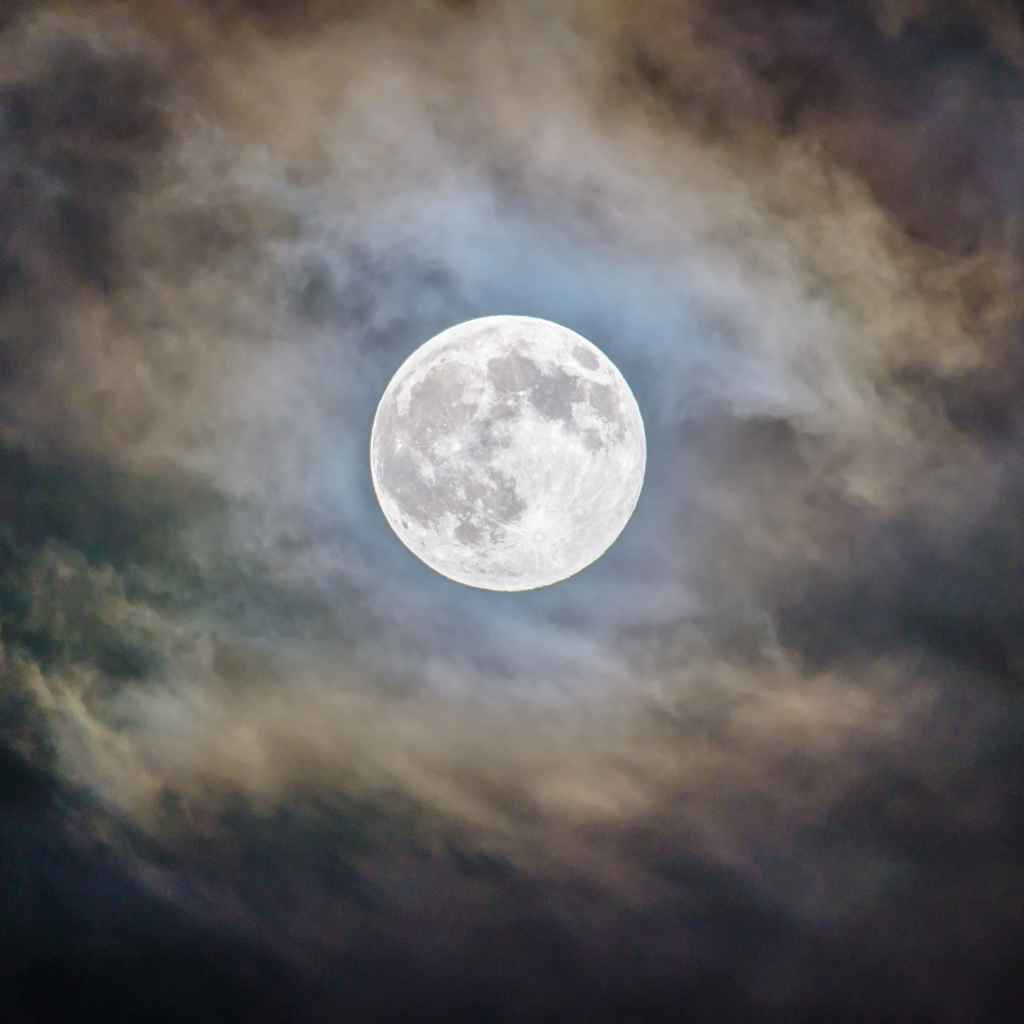Sure, you’ve heard about lunar eclipses and know what they’re all about, but did you know that there’s actually so much more to the full moon than just being a full moon? If you’ve heard someone mention a harvest moon or a supermoon, those are just two of the types of full moons you can see in the sky, but there are actually so many more of them. In fact, each month of the year has a full moon with its own name and story, typically from Native American tales. Keep reading to learn the history of each and mark your calendars for the most special full moons in 2020.
Related: 30 Stunning Pictures of Earth That Will Make You Appreciate This Stellar Little Planet
Wolf Moon
The first full moon of the year is the wolf moon. According to the Farmer’s Almanac, it’s called a wolf moon because Native American groups believed this was the time of year wolves were most commonly heard howling.
Snow Moon
The full moon in February is called a snow moon, because there’s typically very heavy snowfall during this month.
Worm Moon
March’s full moon is the worm moon, and in 2020, it’s the first supermoon of the year. It’s called the worm moon because this is the time of year when Spring starts to arrive, bringing the worms out of the ground.
Pink Moon
April’s moon is the pink moon because of the pink flowers the weather brings.
Flower Moon
In May, you can see the flower moon, which the Farmer’s Almanac says got its name due to everything starting to bloom this month.
Strawberry Moon
The last full moon of Spring is the strawberry moon in June, which signals that ripe fruit is aplenty.
Buck Moon
The antlers of a buck were typically at their largest in July, according to Native American tales, so July’s moon is the buck moon.
Sturgeon Moon
Native Americans called this moon the sturgeon moon, because it was during this time in August that they were able to catch so many fish in the lakes.
Corn Moon
When September’s full moon arrives, the corn moon, it’s time to – you guessed it – harvest the corn.
Harvest Moon
The first full moon of Fall in October is the harvest moon. The name dates back to a time when farmers needed the light of the moon to harvest their crops.
Frost Moon
November’s moon has been called both the beaver moon (because it was the time of year when Native Americans trapped beavers for their pelts) and the frost moon, because it was the time that cold weather set in.
Cold Moon
Native Americans called December’s moon the cold moon because it was the dead of Winter.
Full Moon
Not all full moons are the same. In fact, there are several different full moons that you might not be familiar with. A standard full moon, though, happens when the side of the moon facing Earth is completely lit by the sun.
Supermoon
The supermoon is exactly what it sounds like: a supersize moon. When the full moon is closest to the Earth it appears larger than normal, but it’s just because of its proximity.
Micromoon
A micromoon is the exact opposite of a supermoon. It’s what happens when the moon is the farthest distance from Earth.
Blood Moon
A blood moon happens during a total lunar eclipse, or when Earth is directly between the moon and the sun. The moon takes on a red glow, which is where the name comes from, because the only light getting to the moon is from the edge of the Earth’s atmosphere, according to NASA.
Blue Moon
Sorry to break it to you, but blue moons aren’t actually blue. According to NASA, every two and a half years there will be an extra full moon in a season, and that moon is the blue moon (hence the saying, “once in a blue moon”).

